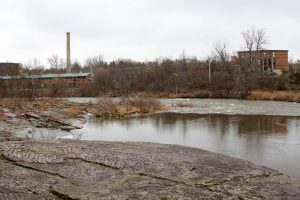
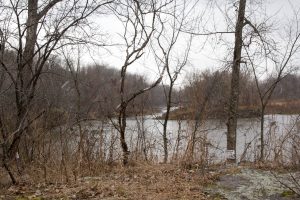
When I woke up on Saturday morning and saw the snowflakes falling outside of my window, I knew a visit to my Salmon Hole Phenology site was on the agenda for that day. After bundling up in an assortment of warm layers, I made the walk down to Winooski to see what the changing seasons had brought to my spot.
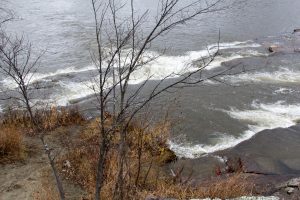
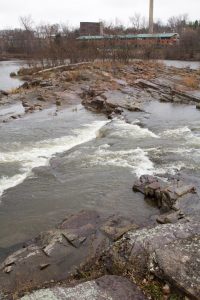
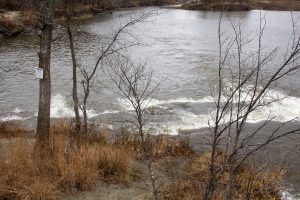
Aside from the floating white flakes, I was shocked to find that the water level of the Winooski River had risen dramatically, with rushing white rapids covering the smooth rocks that I had once been able to climb on during warmer days.
Another shocking find on my visit was evidence of beavers. Previously I had been struggling to find any signs of animals at Salmon Hole aside from the fish in the river, but on this most recent visit I spotted a tree that had clearly been gnawed at by a beaver very recently.
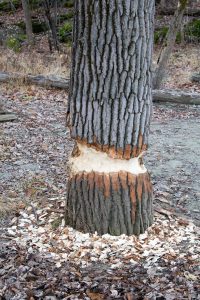
Compared to my first visit to this spot, the landscape has changed dramatically. Aside from the increase in water level, the trees had lost all of their leaves, and the landscape went from vibrant greens to gloomy grays and browns. The river, once calm, clear, and blue, is now rushing and reflects the grey skies that have taken the place of the summery blue skies. Without their leaves, the trees stick out harshly against the skies like skeletons, dancing in the wind.
Salmon Hole is called such because of its land use history of fishing. Especially in the warmer months, it is common to see multiple fisherman wading in the waters of the Winooski River, as I witnessed on my first visits to this location. The underwater topography of the river is home to many pockets where food collects in the current for the fish, and the most popular fish found here are Steelhead Rainbow Trout and Atlantic Landlocked Salmon, hence the name Salmon Hole. Additionally, years ago the Abenaki Indians lived here and farmed on the Winooski River’s fertile banks.